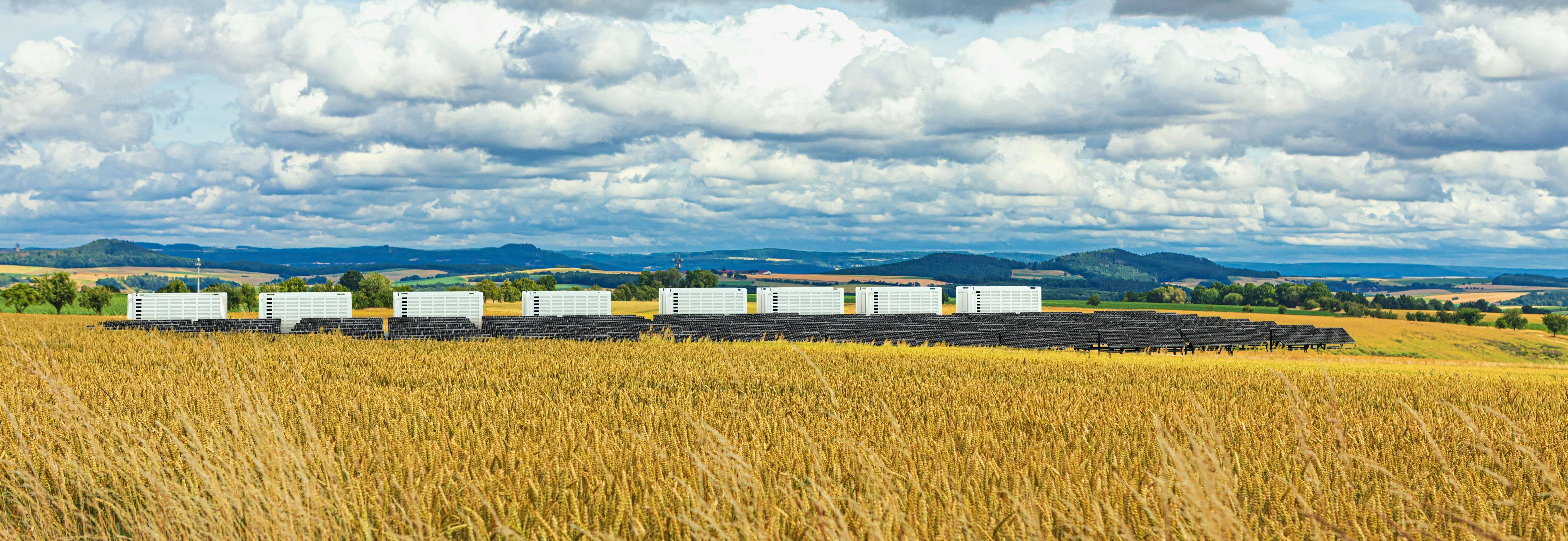
The ERCOT RTC+B Program: What to Know and How to Prepare
The Electric Reliability Council of Texas (ERCOT) launched the Real-Time Co-Optimization Plus Batteries (RTC+B) Program on December 5, 2025. It’s the biggest change to the market since the beginning of ERCOT’s Standard Market Design 15 years ago.
To help you navigate this change, our experts have created a conglomeration of resources.
Have a question? Learn how we can help you supercharge your participation in ERCOT's enhanced market.
ERCOT Is Changing. We’ll Make Sure You’re Ready.
We’ve been working in the ERCOT market since 2008. We’ve seen ERCOT evolve, we’ve adapted through every market redesign, and we’ve helped our customers succeed at each step.
With RTC+B, you don’t have to go it alone. Yes Energy has your back — we’ll help you understand what this change means for your business, ensure you have the right data at your fingertips, and guide you through the transition with confidence.

Read: ERCOT and ISO-NE Introducing Energy Market Co-Optimization in 2025
Consider this your guide to exactly what co-optimization is, which markets currently have it, and which ones are getting it.
Dive into:
- What is co-optimization of energy and ancillary services?
- What are the benefits of co-optimization?
- What’s an example of co-optimization?

Watch: The ERCOT RTC+B Program Explained
Join our Market Monitoring team of experts to learn more about this major market change, including:
- An overview of the transition and how it could impact you
- Alterations to the Day-Ahead Market and energy storage resource modeling
- How Yes Energy is preparing for a smooth transition with robust power market data and insights.
Watch: Preparing for ERCOT RTC+B Changes
As ERCOT prepares to implement RTC+B, take a comprehensive look at what these changes mean for you.
- A clear overview of how Yes Energy adapted when ERCOT RTC+B went live on December 5, 2025.
- Learn about Yes Energy’s approach to collecting, modifying, and retiring data across our products.
- Get guidance on how to stay informed about these evolving data changes beyond the go-live.
Frequently Asked Questions (FAQs)
General Market Design and Objectives
You can find out more information by going to the Yes Energy help system (Yes Energy login required). You can also reach out to your dedicated account manager or support@yesenergy.com.
ERCOT has announced changes impacting 97 public reports and dashboards as of 9/25/2025; however, ERCOT has not yet released a full list of all impacted public reports and dashboards.
Yes, there will still be a price adder report post-RTC. While the market trials version of this report is currently included in Group 1, the post-RTC production version of this report will be included in Group 3 (available after go-live). The EMIL ID will remain NP6-323-CD but the report name will change from "Real-Time ORDC and Reliability Deployment Price Adders and Reserves by SCED Interval" to "Real-Time Price Adders by SCED Interval" and include RTC+B specific data.
While the ORDC-related price adders will be going away under RTC+B and excluded from the new version of the report, there will still be a Real-Time Reliability Deployment Price Adder (RTRDPA) included in the new report. See both reports linked above for more details on the changes being made to adders post-RTC.
SCED Operations and Market Mechanics
With RTC+B, ancillary services in the day-ahead market will be financially binding only. For both generation and load resources, ancillary service offers will be paid the day-ahead clearing price and settle any imbalances in the RT market.
Typically, the SCED runs and updates every five minutes in the real-time market. This includes when ERCOT RTC+B goes into effect. Under RTC+B, ERCOT's SCED engine will be enhanced to simultaneously optimize both energy and AS at a similar five-minute interval.
With respect to the publication of SCED once RTC+B goes live: Our team is not aware of concrete details published by ERCOT yet around whether all SCED data will be immediately publicly available or if some portions will be delayed.
The Updated Desired Base Point (UDBP) will be retired and replaced with the Updated Desired Set Point (UDSP). The UDSP includes information similar to the UDBP (i.e. four-minute ramp instruction) but now will also include resource-specific signals for regulation deployment.
Put another way, UDBP = four-minute ramp instruction, UDSP = four-minute ramp instruction + regulation instructions (as applicable).
RTC+B Market Trials data is dependent on participation in the trials and there has been high participation from QSEs in SCED market trials (compared to lower participation in DAM trials). ERCOT did have 100% QSE participation in the LFC closed-loop test on September 11, 2025. It is interesting to look at the data for September 11, 2025, between 10:30 a.m. and 12:30 p.m. CST. This is when ECROT was conducting its closed-loop LFC test, and RTC+B was the production system during this time. Based on initial observations, prices seemed to be comparable between current production and the RTC+B system.
The large delta is likely a cause of RTC+B testing being a current and ongoing process in a test environment. In the Weekly RTC+B Market Trials Webex, ERCOT mentioned that pricing data is still not perfect since there is scarcity in the RTC+B system. This is because energy offers are not always being replicated in the RTC+B system around the clock.
Pricing, ASDC, and Virtual Participation
Under RTC+B, the current system-wide offer cap (SWCAP) of $5,000/MWh is being replaced by a day-ahead system-wide offer cap (DASWCAP) equal to $5,000/MWh and a real-time system-wide offer cap (RTSWCAP) equal to $2,000/MWh. This replacement will happen at go-live. The system-wide offer caps are not to be confused with price caps. It is possible for the LMP to exceed offer cap prices, for example, due to extreme congestion, like we saw earlier this year as outlined in this Yes Energy blog post. However, under RTC+B the system lambda used to determine LMPs and the real-time MCPCs (ancillary service clearing prices) will be capped at the effective Value of Lost Load (VOLL), which is currently set to the DASWCAP of $5,000/MWh.
Yes. Any registered ERCOT QSE is able to participate in virtual ancillary service trading; however, ERCOT has specific credit requirements for virtual bidding that must be met.
Yes, that is correct!
There will be over 100 ERCOT reports impacted by RTC+B, ranging from new reports added (25), reports modified (28), and reports retired (17). Regarding the data impact in Yes Energy, we will be keeping the spreadsheet linked in the ERCOT RTC+B FAQ article on our help system up to date with all data impacts.
Collateral requirements are changing to capture the additional risk of ancillary service (AS) virtual offer activity in the DAM, and the changes may impact you. ERCOT released a market notice with more details on November 5,2025, citing two key credit reports with changes. However, these reports are certified, and as a result, Yes Energy is unable to collect them.
From an offer perspective, RTC+B does not change the fundamental market premise that energy and ancillary services are offered to the market based on the marginal cost to the resource of providing those services.
What will be new from an energy clearing price perspective is that the LMP calculation will now also include the opportunity cost of providing reserves. The expectation is that through the process of co-optimization, a more optimal, least-cost mix of energy and reserves will be achieved, resulting in lower overall costs to the system. These lower costs will be due in part to reduced energy prices, on average over time, relative to the energy prices that would be realized in the absence of co-optimization.
It's too early to say with certainty, as this is a new market feature. Virtual participation will add liquidity and market competition, which may have a material and disruptive impact on existing DART price spreads, particularly at the onset of the market launch. We anticipate that over time, the additional DAM liquidity will contribute to greater price convergence between the DA and RT, i.e., reduced DART spreads.
Virtual participation in the AS market under RTC+B will be purely financial, just like virtual energy offers/bids today, and will not require physical qualification to participate.
Batteries (ESRs) and Telemetry
See below for the potential short-term and long-term impacts of RTC+B on BESS node pricing in ERCOT.
Potential short-term impacts:
- This market change may cause increased volatility in pricing, creating opportunities for participants who are ready and actively participating at go-live. These disruptions include the complete overhaul of the RT clearing engine for pricing and dispatch, introducing co-optimization, adding new AS markets into the RT for the first time, and introducing virtual AS to the DAM.
- From the perspective of batteries, the volatility at market launch could introduce opportunity to capture disruptions in the daily price spreads for charging and discharging.
Potential long-term impacts:
- Co-optimization in the RT market is expected to result in more optimal, least-cost dispatch, which is expected to produce reduced RT energy prices on average over time (compared to the non-co-optimized scenario).
- Virtual AS participation in the DAM could introduce additional liquidity and market competition, contributing to greater price convergence between the DA and RT over time, i.e. reduced DART spreads
For ESR owners, the volatility at market launch could introduce an opportunity to capture disruptions in the daily price spreads for charging and discharging. Virtual AS participation in the DAM could introduce additional liquidity and market competition, contributing to greater price convergence between the DA and RT over time, i.e. reduced DART spreads.
Batteries, or ESRs, will now be modeled as a single resource. The telemetry changes for ESRs, including state of charge, are included in this checklist available from ERCOT. ESRs will continue to be expected to provide SOC-related telemetry items such as SOC (MWh), Max SOC (MWh), Min SOC (MWh), Max Operating Discharge Power Limit (MW), and Max Operating Charge Power Limit (MW).
The SCED will incorporate SOC into the market optimization, ensuring that awards to ESRs are feasible. The awards for each ESR will be limited based on a number of inputs, including SOC information.
This will be different from today, where currently it's the responsibility of the QSE to ensure sufficient SOC to cover its responsibilities.
Market Trials and Data Availability
Market trials data is available via the PowerSignals Time Series Analysis module and the DataSignals API. The easiest way to find market trial data in the data catalog is to select ERCOT as the ISO and then search for "RTC."
ERCOT has announced changes impacting 65 CDRs (including new reports, modifying existing reports, and some report retirement); however, ERCOT has not yet released a list of all impacted CDRs.







.jpg?width=800&height=500&name=2677069_03ERCOTRTC+BWebinarFeatureImage_111325%20(1).jpg)





.png?width=1200&height=627&name=Untitled%20design%20(72).png)

